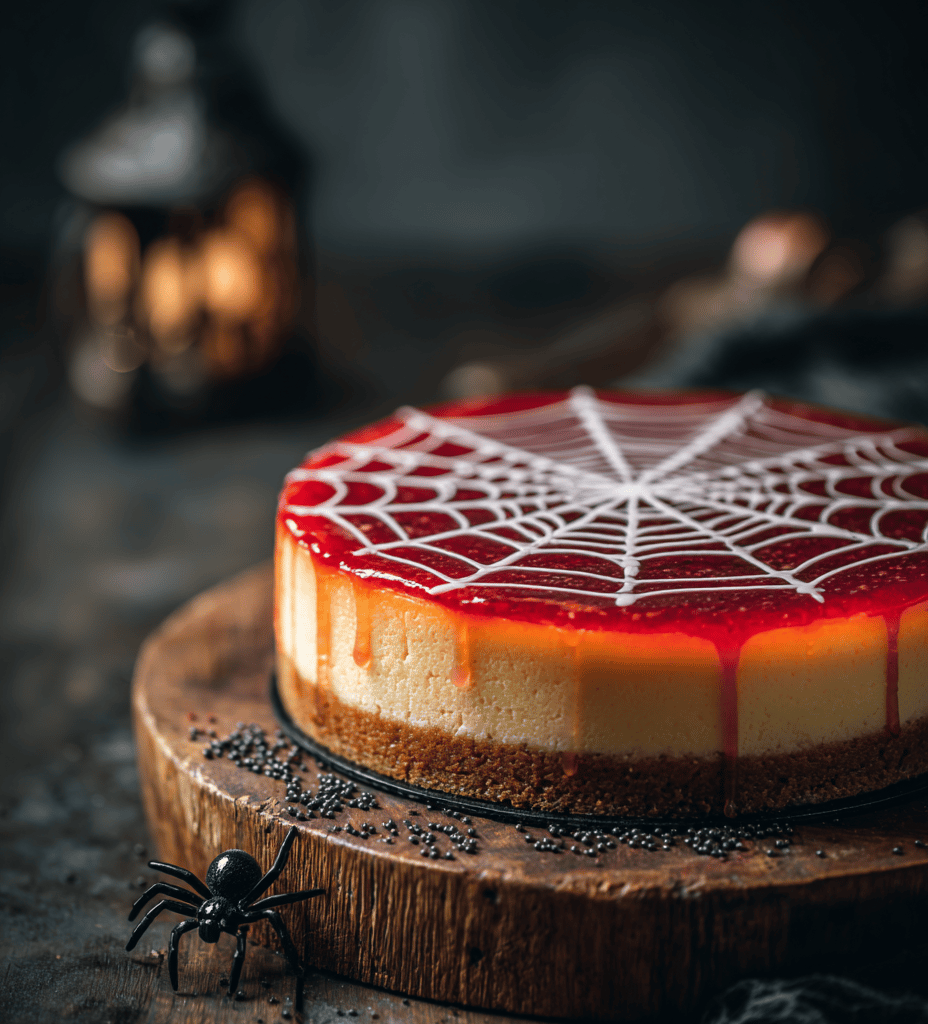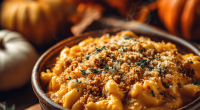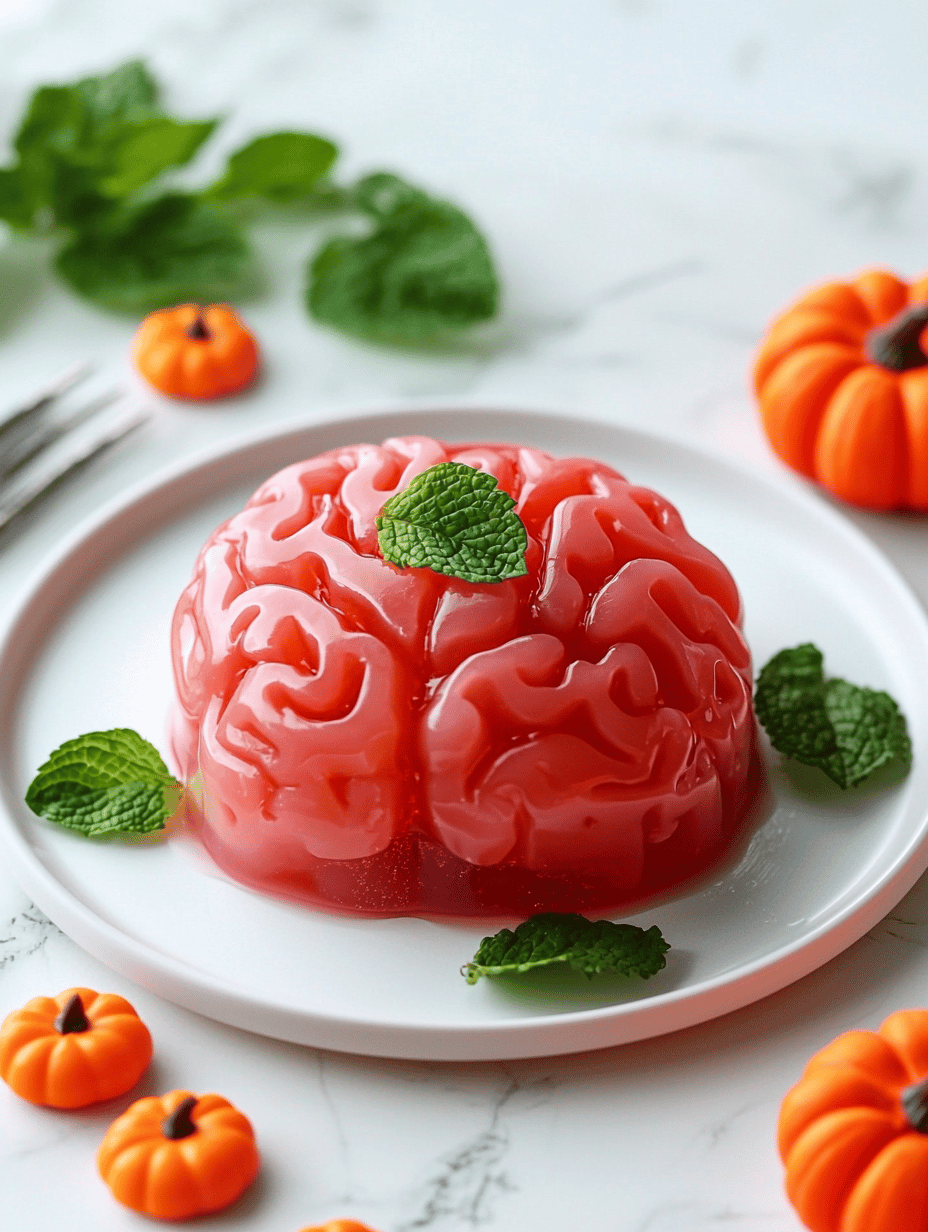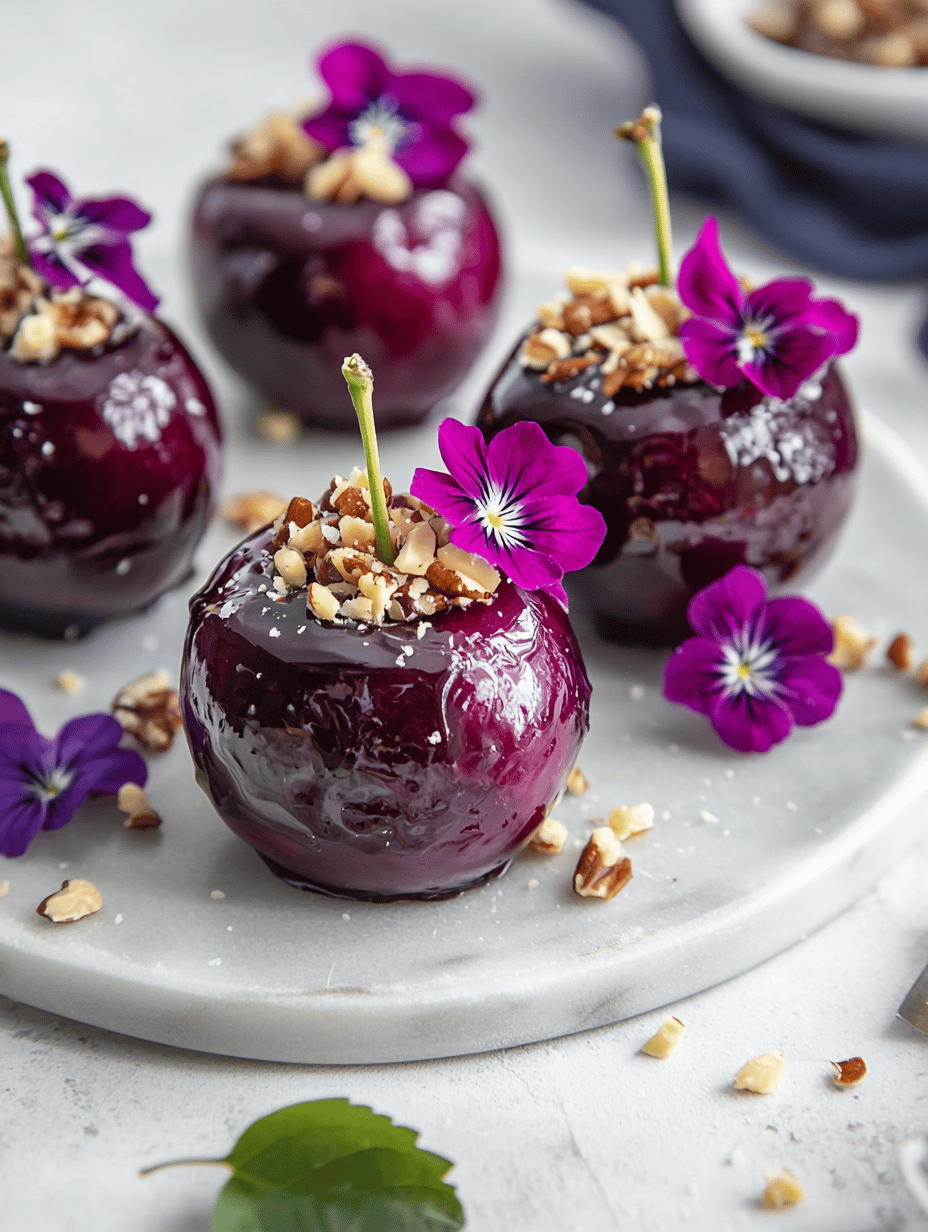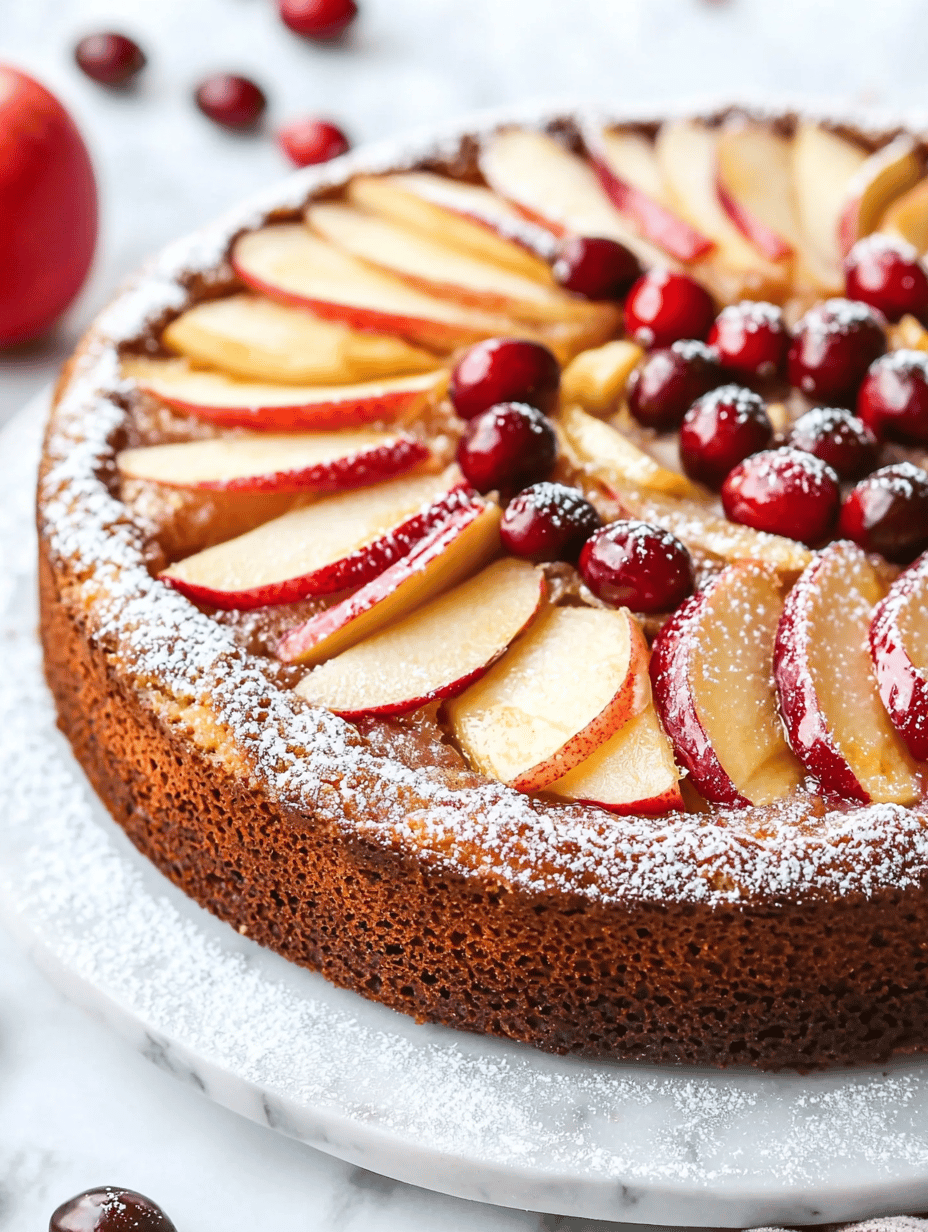I love how a simple cheesecake can turn into a work of art with just a little extra effort. This spiderweb version is a playful twist on a classic, adding a spooky, intricate design that’s surprisingly easy to do. It’s a reminder that desserts don’t always have to be perfect—sometimes, a little chaos makes them more memorable.
Why I Keep Coming Back to This Cheesecake
It’s a reminder that a simple dessert can be transformed with a touch of creativity. The web design invites playful chaos, and the tangy topping balances sweetness in a way that’s endlessly satisfying. Plus, it’s a foolproof project that looks impressive without fuss, making it my go-to for both fun and flavor.
Breakdown of Key Ingredients & Their Roles
- Graham crackers: Crunchy, slightly sweet base that provides texture. Substitute digestive biscuits if needed.
- Cream cheese: Creamy, tangy core of the cheesecake. Full-fat is best for richness.
- Sugar: Sweetens and balances the tang of the cream cheese.
- Eggs: Bind the filling, adding structure and smoothness.
- Sour cream: Creates the web pattern, adds tang, and smooths the top.
- Lemon juice: Brightens the sour cream web, enhances the overall flavor.
- Butter: Binds the crust; use unsalted for control over saltiness.
Tools You’ll Need to Make Your Spiderweb Cheesecake
- Springform pan: To bake and easily remove the cheesecake without damaging its shape.
- Mixing bowls: For combining the crust ingredients and the filling.
- Electric mixer or whisk: To get a smooth, creamy filling.
- Piping bag with a small round tip: For creating the web pattern on top.
- Toothpick or skewer: To draw the web pattern and add final touches.
Crafting the Spiderweb: Step-by-Step
Step 1: Preheat your oven to 160°C (320°F).
Step 2: Mix crushed graham crackers with melted butter until crumbly.
Step 3: Press the mixture into a 23cm (9-inch) springform pan to form the crust.
Step 4: Beat cream cheese with sugar until smooth, then add eggs one at a time.
Step 5: Pour the filling over the crust, smoothing the top.
Step 6: Bake for 50-60 minutes until the edges are set but the center jiggles slightly.
Step 7: Let it cool in the pan for 1 hour, then chill in the fridge for at least 4 hours or overnight.
Step 8: Create the spiderweb pattern by piping sour cream mixed with a touch of lemon juice on top.
Step 9: Use a toothpick to draw radial lines from the center outward, then connect them with concentric circles.
Cooking Checkpoints & Tips to Keep in Mind
- The crust should be firm and crumbly, not greasy or soggy.
- The filling should be smooth without lumps, and slightly wobbly in the center.
- The edges of the cheesecake should be set and slightly golden.
- The web pattern should be clear and defined, not smudged or smudgy.
Common Mistakes & How to Fix Them
- Cracks forming on the surface.? OVER-BAKED the cheesecake, causing cracks. → Reduce baking time or check for jiggle.
- Web design looks messy.? WEB pattern smudges or drips. → Use steady pressure and chill the piping tip.
- Lumpy texture in the filling.? Filling is lumpy. → Sift cream cheese before mixing.
- Center jiggles excessively.? Cheesecake is too runny. → Ensure proper cooling and chilling.
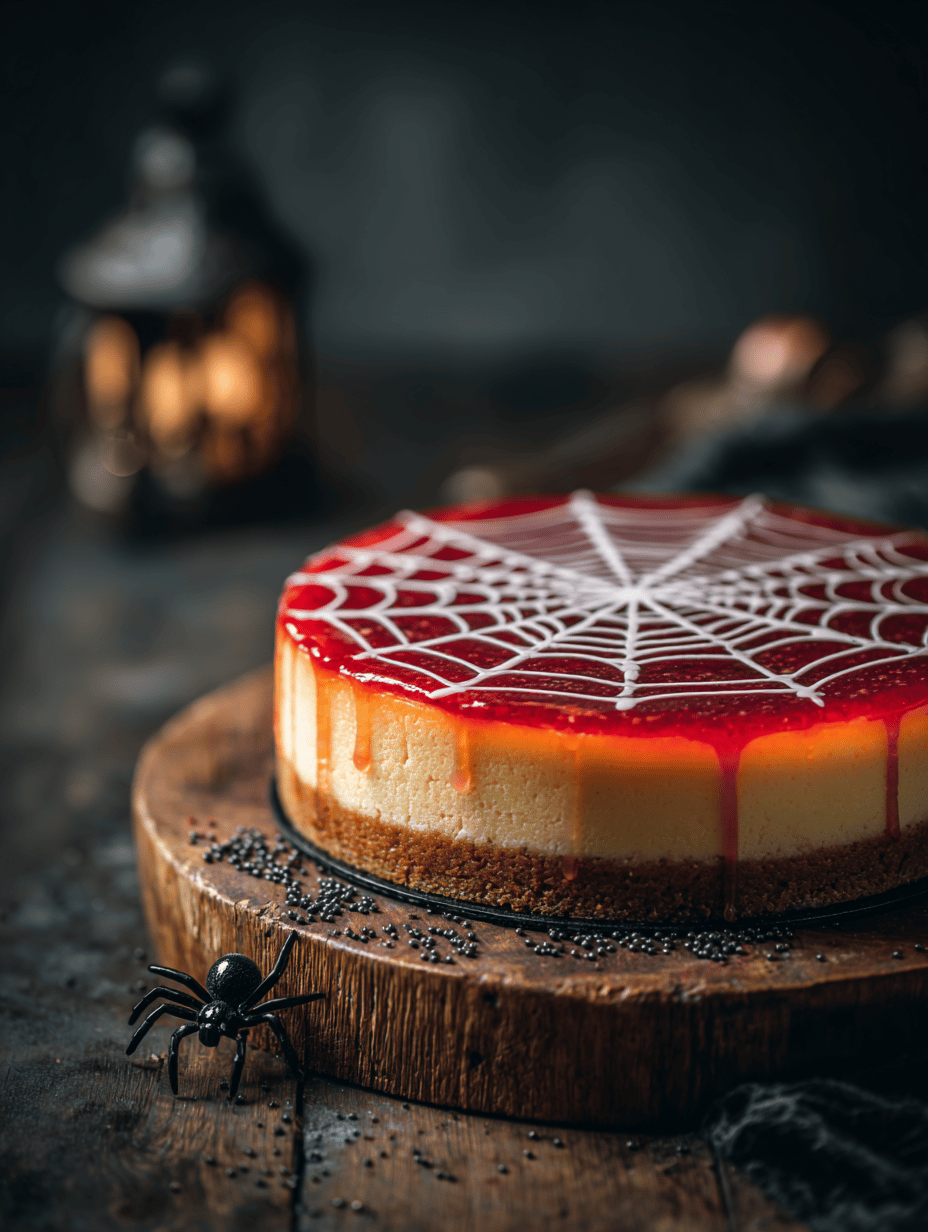
Spiderweb Cheesecake
Ingredients
Equipment
Method
- Preheat your oven to 160°C (320°F).
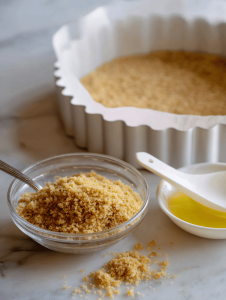
- Mix graham cracker crumbs with melted butter until evenly coated and crumbly.
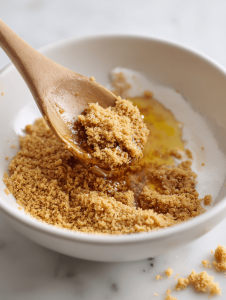
- Press the crumb mixture into the bottom of a 23cm (9-inch) springform pan to form an even crust.
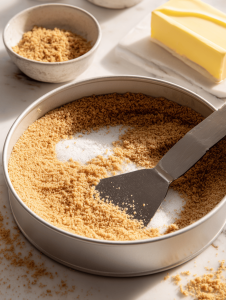
- Beat the softened cream cheese and sugar together until smooth and creamy, about 3 minutes.
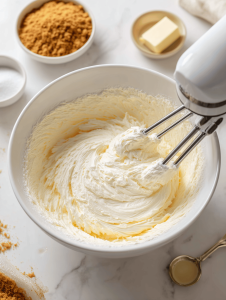
- Add eggs one at a time, beating well after each addition until the mixture is smooth and fluffy.
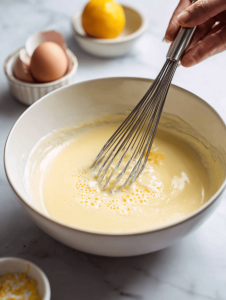
- Pour the filling over the prepared crust, spreading it out evenly with a spatula.
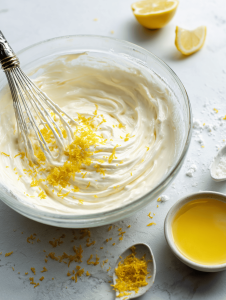
- Bake for 50-60 minutes, until the edges are set and slightly golden, and the center jiggles gently.
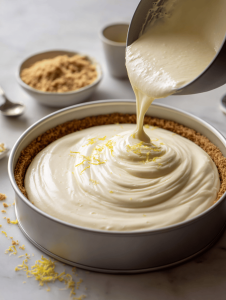
- Remove the cheesecake from the oven and let it cool in the pan for about 1 hour, then refrigerate for at least 4 hours or overnight to set completely.
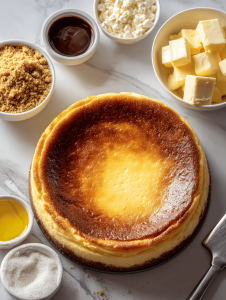
- Mix sour cream with lemon juice until smooth; this will be used to create the web pattern.
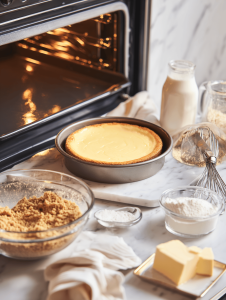
- Spread the sour cream mixture evenly over the chilled cheesecake’s surface.
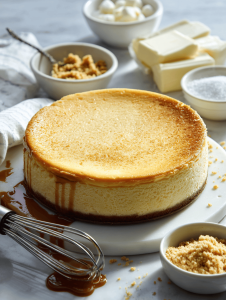
- Fill a piping bag fitted with a small round tip with the sour cream mixture, and pipe concentric circles across the web surface.
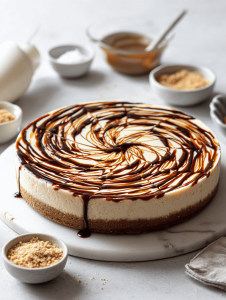
- Use a toothpick or skewer to draw radial lines from the center outward, connecting the circles to form a spiderweb design.
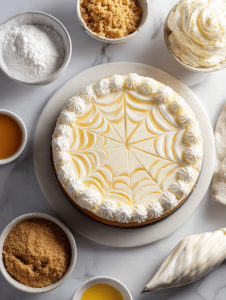
- Chill the decorated cheesecake for about 30 minutes to set the web pattern before slicing and serving.
Notes

Hi there! I’m Isabella, the founder and curious foodie behind Crumb Detective. I’ve always believed that every dish has a story to tell — from the secret family recipes passed down through generations to the bold experiments happening in kitchens around the world.

